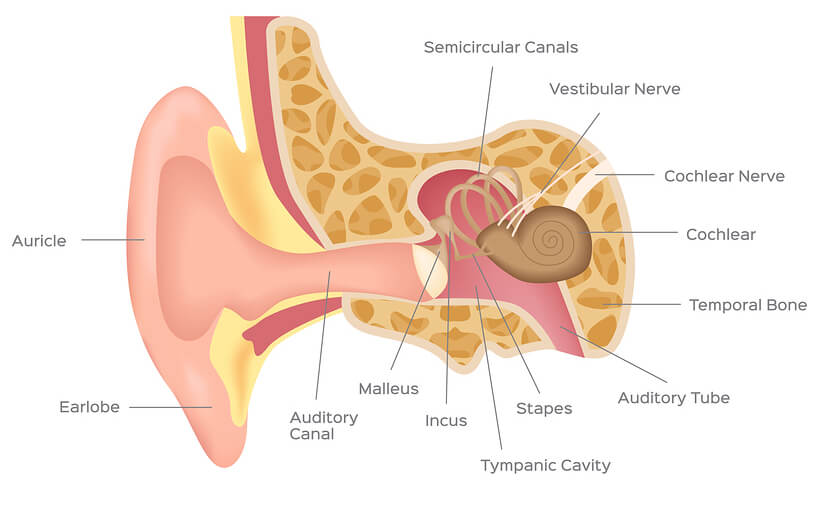Hearing Loss Overview
Because hearing loss happens gradually, it is often difficult to identify and detect. This may be why most people don’t realize how common hearing loss actually is. Currently, about 48 million Americans live with hearing loss, including 1 in 3 people over 65 and 1 in 2 of those 75 or older. Having a basic understand of healthy hearing and hearing loss may allow us to better detect the early signs of hearing loss in ourselves and our loved ones.
Early Signs of Hearing Loss
Do any of the following describe you?
First, sound waves enter our outer ear and are sent down our ear canals.
Next, the sound waves cause our ear drums and three tiny bones in our middle ear to vibrate.
The vibration of the ear drum and the three tiny bones causes a special liquid that sits in our spiral-shaped cochlea in our middle ear to also vibrate and ripple.
Delicate and hair-like cells that are located on and around this liquid begin to also bend and sway with the vibration and ripple of the liquid.
As the hair cells bend and move, they create neural signals that can be picked up by the auditory nerve.
These neural signals are then sent down the auditory nerve where they are finally received by the brain and interpreted into sounds that we recognize and understand.
If you identified with one or more of these statements, it may be time to have a hearing test. Taking care of your hearing health is an imperative part of life, as it can affect our relationships, emotional health, earning potential and cognitive health.
How Hearing Works
To understand hearing loss, it is beneficial to first understand how healthy hearing works. Amazingly, our auditory system is one of the most complicated in our entire bodies, and it never turns off. In order for us to hear even the most minute sounds (including every letter in every word) this entire process must occur. Hearing loss occurs when there is an issue with one or more of these processes.
- First, sound waves enter our outer ear and are sent down our ear canals.
- Next, the sound waves cause our ear drums and three tiny bones in our middle ear to vibrate.
- The vibration of the ear drum and the three tiny bones causes a special liquid that sits in our spiral-shaped cochlea in our middle ear to also vibrate and ripple.
- Delicate and hair-like cells that are located on and around this liquid begin to also bend and sway with the vibration and ripple of the liquid.
- As the hair cells bend and move, they create neural signals that can be picked up by the auditory nerve.
- These neural signals are then sent down the auditory nerve where they are finally received by the brain and interpreted into sounds that we recognize and understand.

Types, Causes & Treatments of Hearing Loss
There are four key types of hearing loss: sensorineural, conductive, auditory processing, and mixed.
Sensorineural Hearing Loss
Sensorineural is the most common type of hearing loss. About 90% of hearing aid users have this type of hearing loss. Sensorineural hearing loss occurs when there is damage to the nerve pathways or sensory aspects of our hearing. Most often, sensorineural hearing loss is the result of damage to the tiny hair-like cells in our cochlea that are responsible for transmitting sound waves into signals the brain can interpret.
Conductive Hearing Loss
Conductive hearing loss is less common and is the result of physical damage, deformation, or blockage that hinders the sound waves’ ability to properly move through the outer and middle ear.
Auditory Processing Disorders
Auditory Processing Disorders occur when the “hearing” system may run perfectly normally, but the brain has difficulty processing the neural signals it receives.
Mixed Hearing Loss
Mixed hearing loss occurs when there is the presence of two or more of the above types of hearing loss in conjunction with each other.


